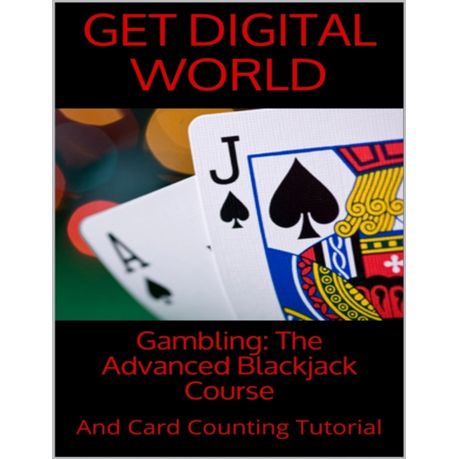One of the most visible differences between basic and advanced blackjack strategies can be seen in the charts. Basic blackjack strategy generally uses a single, easy to follow chart. This chart can be implemented on all variants of the game, although with mixed results.
By contrast, the rules of blackjack advanced strategy change from variant to variant. This means that several strategy charts exist, and each is specialized to deal with the rules of those individual blackjack variants, including the number of decks in use. Naturally, this makes them far more effective.
On top of that, almost every basic blackjack strategy will tell players to avoid insurance bets at all costs. Advanced strategy guides advocate taking insurance bets, but only under certain conditions.
Those change from game to game, and each strategy chart will tell you precisely when it is in your interest to do so. Of course, all of this makes learning advanced blackjack strategy charts considering more taxing than getting to grips with basic strategy.
Blackjack Counting Systems
Advanced Card Counting. When learning Basic Card Counting, the Blackjack player’s goal is to master the technique of tracking cards as they are played out of the deck. In doing so, the player will know when the deck is favorable and wagering aggressively is warranted, and when to bet the minimum and wait for the house edge to decrease. One of the first Blackjack card counting systems was developed by Edward Oakley Thorp, a retired mathematics professor originally from Chicago. Edward’s 10 Count system is considered by many to be the grandfather of all card counting formulas for the game of Blackjack.

When learning Basic Card Counting, the Blackjack player’s goal is to master the technique of tracking cards as they are played out of the deck. In doing so, the player will know when the deck is favorable and wagering aggressively is warranted, and when to bet the minimum and wait for the house edge to decrease. This is accomplished only through practice.
However, once a player has become proficient at counting cards, it is time to move to the next level—applying that knowledge to the actual play of the hand. Knowing when the deck is rich or poor in large cards can be used as a guide to deciding when to hit, stand, split, or double down.

Some Things Never Change
Counting cards does not imply that all of the Basic Blackjack Strategy for card play should be thrown out the window and replaced with a new chart. Quite the contrary, some actions never change regardless of the status of the deck.
For example, when the player holds a hand valued at 12~16, the optimum choice is to hit whenever the dealer shows a 7, 8, 9, or Ace—always. Similarly, against the dealer’s 2~6, the player should always stand on a hard total of 15 or 16, no matter how many small cards remain in the deck.
When it comes to splitting, Aces and 8s are always split and 5s are never split. Period. Pairs of 3s and 7s should be played exactly the same way they are when no card counting is involved. And pairs of 2s, 6s, and 9s are played no differently than they are in Basic Blackjack Strategy, unless the dealer shows a 2, 3, or 4, in which case the count will require some refinements in play.
As for doubling down, it is always the right play when holding 9~11 or a soft total of A-3 through A-7 against the dealer’s 5 or 6. Always. Similarly, doubling down is correct when holding a hand valued at ten against the up cards 2~7 and when sitting with eleven against up cards 2~9. Again, card counting—any form of card counting—is immaterial in these situations.
Other Things Do Change


Lawrence Revere, author of “Playing Blackjack as a Business” and developer of the Revere Plus/Minus Strategy, once pointed out that the difference between successful card counters and those who fail can be summed up in one word: Perfection. In order for card counting to work as it is supposed to, the player must keep the count perfectly, wager accordingly without any error, and play the cards perfectly according to the situation.
Each card counting system—Hi-Lo Count, Ten Count, Point Count, KO Count, etc.—has its own way of modifying basic play according to its version of the count. Charts are produced for players to memorize. There is no other way to know how to use the information provided by counting. And then it takes some real guts to play “perfectly” once the modifications have been learned.
For example, when holding a hard total of twelve, beginning players are taught to stand facing the dealer’s 4~6 and hit otherwise. Using the Plus Minus counting system, tracking large and small cards as explained in Basic Card Counting, the player will stand against the dealer’s 3~6 only when the count is +1 or higher. Otherwise, the player must draw another card.
Blackjack Counting Cards Values

This can evoke all kinds of negative reactions at the table from other players who do not count cards. They will say, “The Book says stand when you’ve got twelve and the dealer has a 6 up. Are you crazy? You’ll ruin your hand and steal his bust card. You can’t hit that. You’re messing it up for everyone.”
Advanced Blackjack Card Counting Sheet
But the practiced card counter knows that, when the deck is rich in small cards, following “the Book” and standing simply plays to the house advantage. The percentage play is to hit. It should be clear, then, that advanced card counting is not for those of weak will or who get easily stressed by the comments of others. Quite often it will be necessary to remind oneself that Blackjack is not a team game.